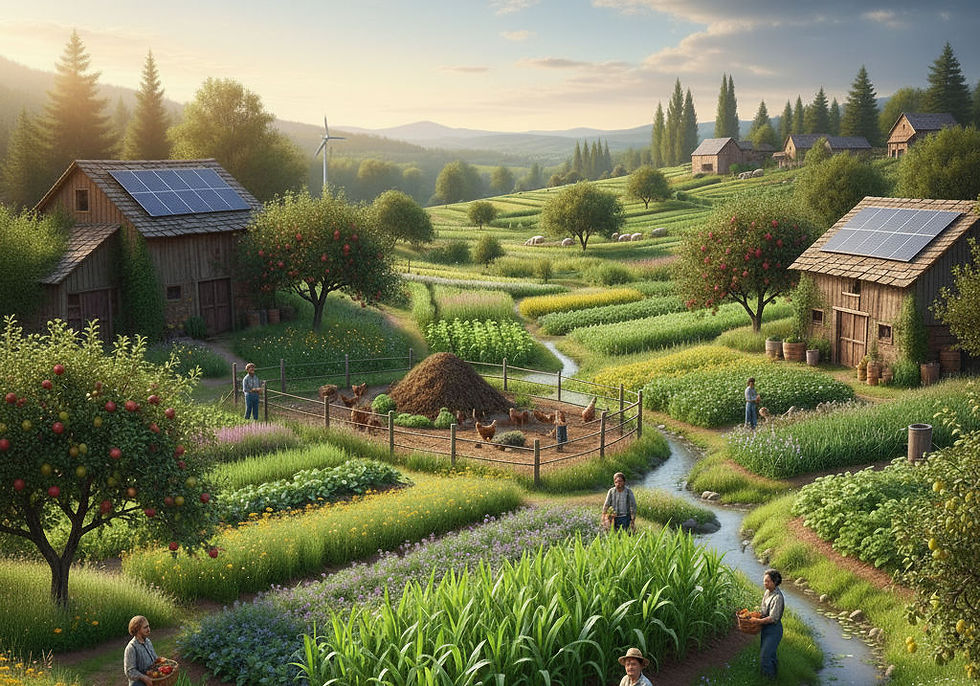Unleash the Potential: Discover What Regenerative Agriculture Can Do for You
- Ron Frazer
- 3 days ago
- 1 min read
Updated: 2 days ago

Regenerative agriculture is a holistic approach to food and farming systems that focuses on actively restoring and enhancing the land, rather than just sustaining it or reducing harm. It aims to reverse environmental degradation, particularly in the soil, and build resilience into the entire ecosystem.
Key Principles of Regenerative Agriculture
The practices of regenerative agriculture are guided by a few core principles that seek to mimic natural systems:
Minimize Soil Disturbance: Reducing or eliminating tilling (ploughing) to protect the soil structure, minimize carbon release, and allow beneficial microorganisms and fungi to thrive.
Keep the Soil Covered (Soil Armor): Ensuring the soil surface is always covered, either by living plants (like cover crops) or crop residue. This protects the soil from erosion, regulates temperature, and conserves moisture.
Maintain Living Roots: Having living roots in the ground for as much of the year as possible, which feeds the soil biology with carbon-rich exudates and keeps the ecosystem function
Increase Biodiversity: Diversifying crops (using crop rotation, intercropping) and other life both above and below ground to improve soil health, break pest and disease cycles, and build ecosystem resilience.
Integrate Livestock: Where appropriate, managing grazing animals in a way that mimics natural herds (short, intense grazing periods followed by long rest) to stimulate plant growth, cycle nutrients, and build soil organic matter.



Comments